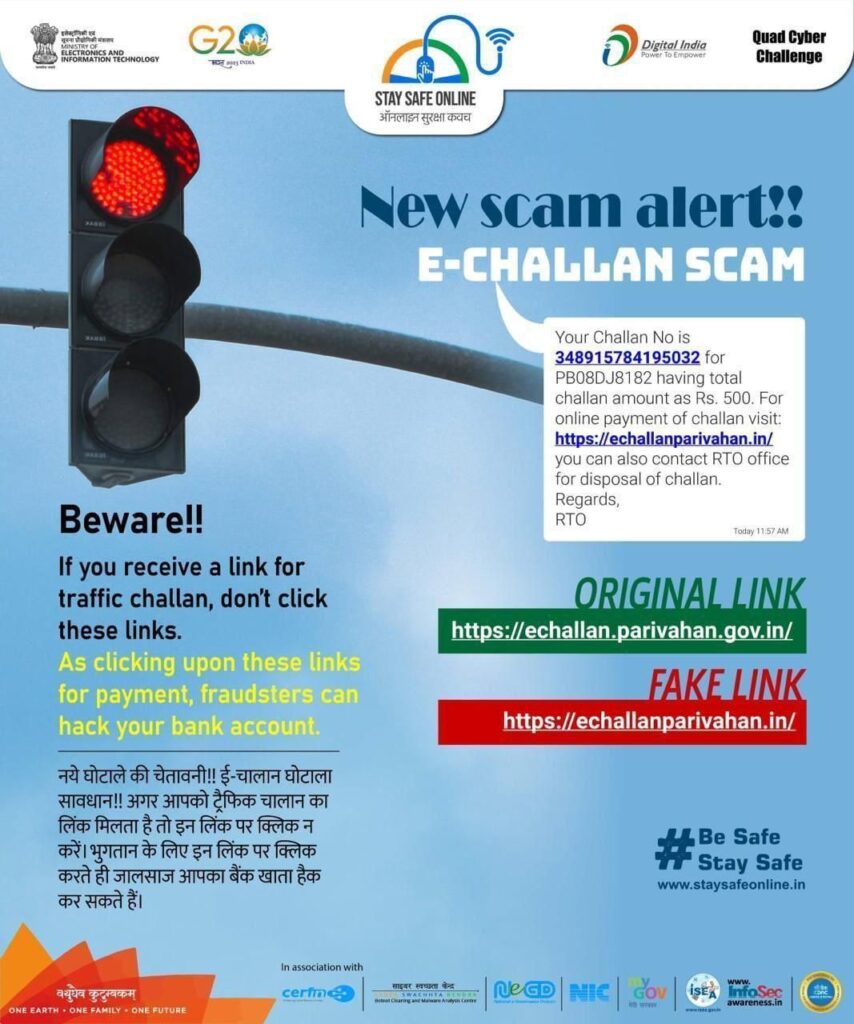E-Challan Scams: How you are being targeted by scammers, tips to stay safe

In a concerning trend, cybercriminals are exploiting public anxiety over traffic fines through a sophisticated scheme known as e-challan scams. These scams involve sending deceptive messages that mimic official traffic violation notices, leading unsuspecting recipients to fraudulent websites. Here’s how these scams operate and how you can protect yourself:
How E-Challan Scams Work
Scammers initiate e-challan scams by sending alarming text messages to vehicle owners, claiming unpaid traffic fines that require immediate payment. These messages often use intimidating language and threats of increased penalties to coerce recipients into clicking on included links.
How Scammers Get Phone Numbers of Vehicle Owners
One alarming deception that traps the unsuspecting victim is the combination of the correct registration number, phone number and sometimes even a photograph of the license plate.
It works like this:
You enter a building where the security asks you to enter your details. Your vehicle number and the phone number combination are now captured in the entry register. If there is a connection between scamster and the security guard, together, they have access to three things:
- Your Phone Number
- Your Vehicle Registration Number
- Parked Vehicle to Take Picture of the License Plate
Any message containing the details of your vehicle number, being received on the correct phone with a picture of your vehicle’s license plate is enough to convince you of the genuineness of the message to get trapped.
Clicking on these links directs users to counterfeit websites designed to look like legitimate government portals for fine payment. On these fake sites, victims are prompted to enter personal information such as credit card details or login credentials. This information is then harvested by cybercriminals for financial theft or used to install malware on the victim’s device.
Recognizing and Avoiding E-Challan Scams

To avoid falling victim to e-challan scams, it is crucial to exercise caution and follow these guidelines:
- Verify Before You Pay: Legitimate e-challans will contain specific details such as your vehicle registration number and the nature of the violation. Scam messages often lack these specifics.
- Use Official Channels: Instead of clicking links in unsolicited messages, visit the official website of your local traffic authority directly. Official government websites typically end with “.gov.in” and provide secure payment options.
- Report Suspected Scams: If you receive a suspicious e-challan message, report it to the authorities immediately. Reporting can help prevent others from falling prey to similar scams.
Police Advisory and Response
Authorities warn that cybercriminals are using increasingly sophisticated methods to deceive vehicle owners. They advise the public to remain vigilant and verify the authenticity of any e-challan notifications before taking any action.
Conclusion
As technology evolves, so do the tactics of cybercriminals. Staying informed and cautious is essential to protect yourself from falling victim to e-challan scams. By verifying the legitimacy of messages and using official payment channels, you can safeguard your personal information and financial security.









